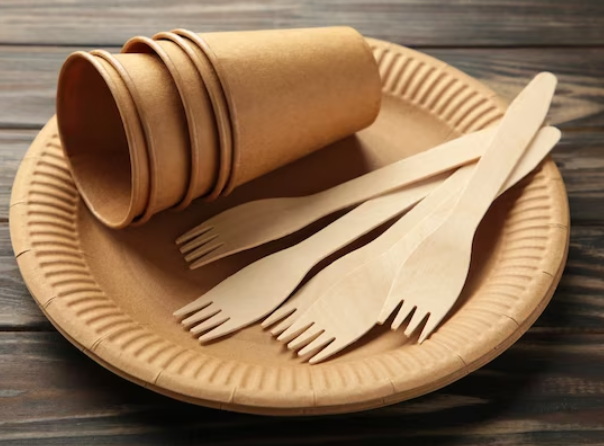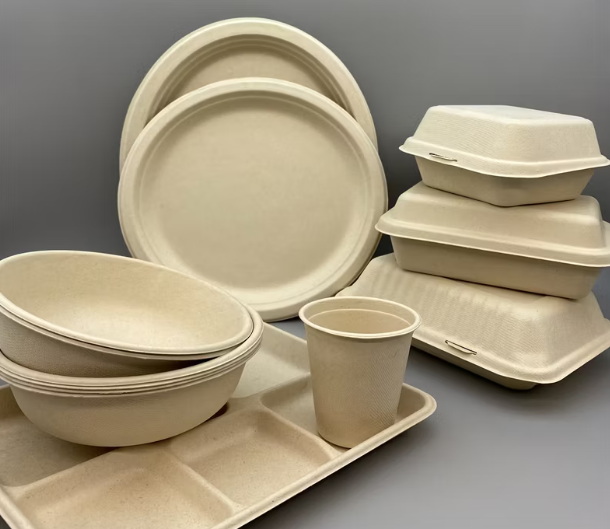
Content Menu
● What Is Disposable Bamboo Tableware?
● How Is Disposable Bamboo Tableware Produced?
● Environmental Benefits of Disposable Bamboo Tableware
>> Biodegradability and Compostability
>> Renewable Resource
>> Lower Carbon Footprint
>> Free from Harmful Chemicals
>> Strength and Versatility
● Limitations and Challenges
>> Composting Infrastructure
>> Transportation and Carbon Emissions
>> Single-Use Culture
● Comparing Bamboo Tableware to Other Disposable Options
● Common Uses for Disposable Bamboo Tableware
● Maximizing the Eco-Friendly Benefits
● The Future of Disposable Bamboo Tableware
● Conclusion
● FAQ
>> 1. What makes disposable bamboo tableware more eco-friendly than plastic or paper alternatives?
>> 2. Can disposable bamboo tableware be composted at home?
>> 3. Is bamboo tableware safe for serving hot and oily foods?
>> 4. Does using disposable bamboo tableware help reduce carbon emissions?
>> 5. Are there any downsides to using disposable bamboo tableware?
The global movement toward sustainability has sparked a wave of innovation in everyday products, especially those designed for single use. Among the most talked-about alternatives to plastic are items made from bamboo, particularly disposable bamboo tableware. These products are celebrated for their natural look, strength, and claims of being environmentally friendly. But how green are they in reality? This article explores the journey of disposable bamboo tableware from raw material to disposal, weighing its benefits, drawbacks, and overall impact on the planet.

What Is Disposable Bamboo Tableware?
Disposable bamboo tableware includes plates, bowls, cutlery, and serving trays crafted from bamboo. Designed for one-time use, these items are meant to be disposed of after meals, making them a convenient choice for events, catering, and take-out services. Unlike traditional plastic or paper disposables, bamboo tableware is made from a fast-growing, renewable grass, which is often promoted as a more responsible choice for the environment.
How Is Disposable Bamboo Tableware Produced?
The production process of disposable bamboo tableware starts with the harvesting of mature bamboo stalks. These stalks are cleaned, split, and pressed into thin sheets or shaped into utensils and plates. Manufacturers typically avoid using synthetic dyes or harsh chemicals, preserving the natural qualities of bamboo. The result is a sturdy, lightweight product that retains the characteristic appearance and texture of bamboo.
Once formed, the tableware is dried and sometimes polished to remove splinters, ensuring a smooth finish suitable for direct food contact. Because bamboo can be harvested without killing the plant, the process is considered less damaging to the environment compared to wood-based alternatives.
Environmental Benefits of Disposable Bamboo Tableware
Biodegradability and Compostability
One of the strongest selling points of disposable bamboo tableware is its ability to break down naturally. Unlike plastic, which can linger in the environment for centuries, bamboo products decompose within a relatively short period under composting conditions. When composted, they return nutrients to the soil and do not leave behind toxic residues.
Renewable Resource
Bamboo is renowned for its rapid growth and ability to regenerate after harvesting. Unlike hardwood trees that take decades to mature, bamboo can be harvested within a few years and regrows from the same root system. This makes it a highly renewable resource, reducing pressure on forests and minimizing habitat destruction.
Lower Carbon Footprint
The cultivation and processing of bamboo require less energy and fewer resources compared to plastic or paper production. Bamboo plants absorb significant amounts of carbon dioxide as they grow, helping to offset emissions from manufacturing and transportation. The absence of chemical fertilizers and pesticides in most bamboo farming practices further lowers the environmental impact.
Free from Harmful Chemicals
Disposable bamboo tableware is typically produced without the addition of synthetic chemicals, dyes, or bleaches. This not only makes them safer for food contact but also ensures that they do not release harmful substances into the environment during decomposition.
Strength and Versatility
Bamboo tableware is valued for its strength and resistance to moisture, making it suitable for a wide range of foods, including hot, cold, or oily dishes. Its durability means it can handle the demands of outdoor events, catering, and food service without bending or breaking.

Limitations and Challenges
Composting Infrastructure
The eco-friendliness of disposable bamboo tableware depends heavily on how it is disposed of. In areas lacking composting facilities, bamboo products may end up in landfills, where decomposition is much slower due to limited oxygen and microbial activity. Without proper composting, the environmental benefits of bamboo disposables are reduced.
Transportation and Carbon Emissions
Most disposable bamboo tableware is manufactured in regions where bamboo grows abundantly, such as parts of Asia. Shipping these products to markets around the world contributes to carbon emissions. While the overall impact is often less than that of plastic, it is still a factor to consider when evaluating the sustainability of bamboo disposables.
Single-Use Culture
Despite being a better alternative to plastic, disposable bamboo tableware is still a single-use product. The most sustainable option remains reusable tableware made from durable materials like glass, ceramic, or stainless steel. Relying on disposables, even those made from bamboo, can perpetuate a throwaway culture unless combined with efforts to reduce overall consumption and waste.
Comparing Bamboo Tableware to Other Disposable Options
| Feature | Bamboo Tableware | Plastic Tableware | Paper Tableware |
| Biodegradable | Yes | No | Sometimes |
| Compostable | Yes | No | Sometimes |
| Renewable Resource | Yes | No | Sometimes |
| Chemical-Free | Yes | No | Sometimes |
| Durability | High | High | Medium |
| Decomposition Time | Short | Very Long | Medium |
| Carbon Footprint | Low | High | Medium |
Common Uses for Disposable Bamboo Tableware
Disposable bamboo tableware is increasingly popular in a variety of settings, including:
- Weddings, parties, and special events seeking an eco-friendly touch
- Restaurants, food trucks, and catering businesses prioritizing sustainability
- Outdoor gatherings, picnics, and barbecues where convenience and minimal cleanup are desired
- Cafés and take-out establishments aiming to reduce their environmental impact
The natural look and feel of bamboo make it an attractive choice for both casual and upscale occasions.
Maximizing the Eco-Friendly Benefits
To get the most out of disposable bamboo tableware, consider these best practices:
- Compost after use: Dispose of bamboo items in home or municipal composting facilities to ensure they break down quickly and return nutrients to the earth.
- Avoid contamination: Keep bamboo tableware free from non-compostable materials, such as plastic liners or food waste that cannot be composted.
- Choose certified products: Select tableware made from sustainably sourced bamboo and free from chemical coatings.
- Educate users: Encourage proper disposal at events or in food service settings to reduce landfill waste and maximize environmental benefits.
The Future of Disposable Bamboo Tableware
As public awareness of plastic pollution and environmental sustainability grows, the demand for alternatives like disposable bamboo tableware is likely to increase. Advances in manufacturing, greater access to composting facilities, and better consumer education will help maximize the benefits of bamboo disposables. Ultimately, while bamboo tableware offers a more sustainable option for single-use needs, the long-term goal should be a shift toward reusable products and waste reduction.
Conclusion
Disposable bamboo tableware stands out as a promising eco-friendly alternative to traditional single-use plates, bowls, and cutlery. Its biodegradability, compostability, renewable sourcing, and low carbon footprint make it a responsible choice for those seeking to minimize their environmental impact. However, its true benefits are realized only when paired with proper composting and a broader commitment to reducing single-use waste. By making informed choices and supporting sustainable products, individuals and organizations can contribute to a healthier planet-one meal at a time.

FAQ
1. What makes disposable bamboo tableware more eco-friendly than plastic or paper alternatives?
Disposable bamboo tableware is made from a rapidly renewable resource that is both biodegradable and compostable. Unlike plastic, which remains in the environment for centuries, bamboo products break down naturally and do not require harmful chemicals during production.
2. Can disposable bamboo tableware be composted at home?
Yes, most disposable bamboo tableware can be composted in home composting systems, provided they are free from plastic coatings or contaminants. Breaking them into smaller pieces can help speed up the decomposition process.
3. Is bamboo tableware safe for serving hot and oily foods?
Bamboo tableware is strong and resistant to moisture, making it suitable for serving a variety of foods, including hot and oily dishes. It does not leach harmful substances and remains sturdy during use.
4. Does using disposable bamboo tableware help reduce carbon emissions?
Bamboo cultivation absorbs significant amounts of carbon dioxide, and the production process typically uses less energy than plastic or paper alternatives. This helps lower the overall carbon footprint, especially when the products are composted after use.
5. Are there any downsides to using disposable bamboo tableware?
While bamboo tableware is a better alternative to plastic, it is still a single-use product. Its environmental benefits depend on proper composting, and transportation from manufacturing regions can add to its carbon footprint. Reusable tableware remains the most sustainable choice, but bamboo disposables are a practical solution when reusables are not feasible.

















